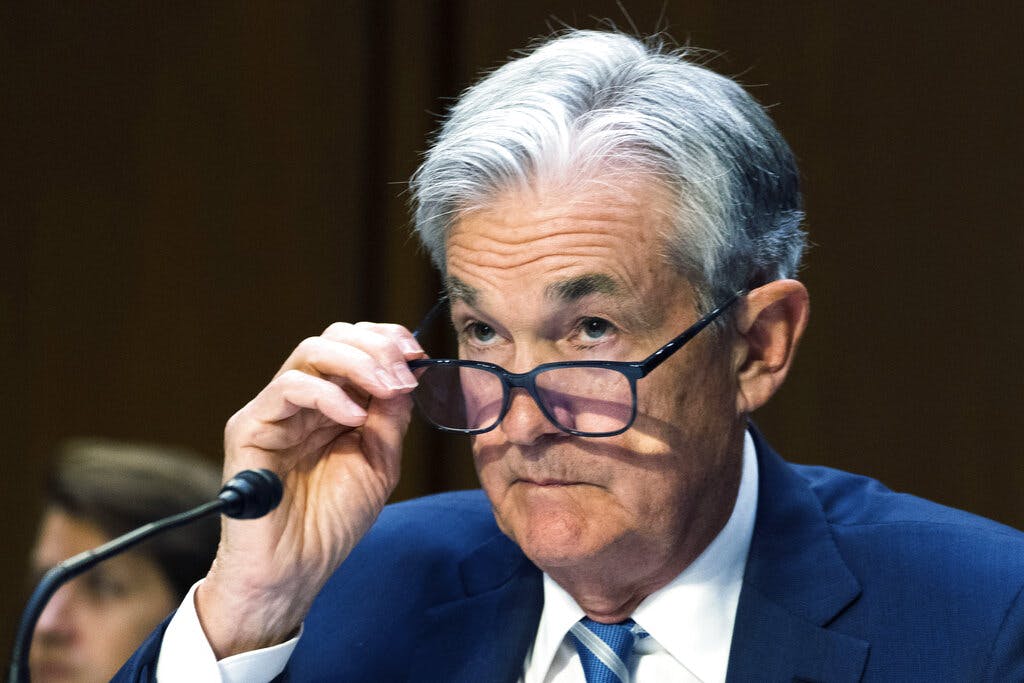Solvency of the Federal Reserve Plummets — at Least Technically — as It Oversees Other Banks, a New Report Warns
Capital base is now leveraged by more than 800 to one, 40 times what’s expected of a commercial bank, Grant’s newsletter reports.

The financial condition of the Federal Reserve has dramatically deteriorated in recent weeks as it contends with the same pressures that sparked a run on Silicon Valley Bank, sparking fears of “looming insolvency” for the nation’s central bank, Grant’s Interest Rate Observer reports.
The Interest Rate Observer’s editor, James Grant, who has been among the central bank’s critics to have been invited to address the New York Fed, cautions that the Fed’s woe is “a technical, hypothetical insolvency,” as opposed to a legal default. The Fed, Grant’s marks, can create money on its own, but it adds that “symbolism is above the law.”
“The Fed is not exactly leading from the front in the matter of safety and soundness,” Mr. Grant tells the Sun. He points to the startling decline in the Fed’s leverage ratio, a measure of assets to capital used to weigh banks’ soundness, as a particular concern.
The Fed, as of last week, is leveraged 848 to one, Mr. Grant says. This leverage ratio, a calculation of assets against capital, represents a startling rise compared to the 2019 leverage ratio, which was closer to 100 to 1, still sharply above what is considered prudent by commercial banks and even some government banks.
FDIC guidelines consider a “well-capitalized bank” to have a leverage ratio of 20 to 1 and an “adequately capitalized bank” to have a ratio of 25 to 1, according to a recent Congressional Research Service report. Ratios above 33 to 1 are considered “significantly undercapitalized.”
“For perspective,” Mr. Grant says, “Alexander Hamilton’s bank, the Bank of New York, settled on a leverage ratio (assets to specie-denominated capital) of 3:1 at the time of its chartering in 1791.” The contrast between Hamilton’s bank and the Fed marks “the difference between the gold standard and the Ph.D. standard,” Mr. Grant observes.
The Ph.D. standard is a phrase used by Mr. Grant to describe the monetary system based on fiat money, in which the value of money and interest rates are set by a group of Ph.D. economists at the Fed without any reference to specie, such as gold or silver, which had obtained for much of our history.
The Federal Reserve, Grant’s notes, is also losing money on its day-to-day operations due to the jump in interest rates over the past year. This represents a historic first for the central bank, analysts Paul Kupiec and Alex Pollock report in today’s Wall Street Journal.
They note that the Fed “did generate profits, which it sent to the Treasury, every year from 1916 on — until last fall. In a development previously unheard of, the Federal Reserve has suffered operating losses of about $42 billion since September 2022.”
“At the current rate of operating loss, the Fed will be fresh out of capital by April Fools’ Day,” Grant’s reports.
“Earning an average of 2.1 percent on its loans and securities while paying in excess of 4.5 percent to its depositors and reverse-repo counterparties,” Grant’s says, “the central bank could hardly not go broke, if the law allowed it.”
Concerns about the Fed’s financial condition were similarly raised by Peter Coy of the New York Times in a piece headlined “The Fed’s Balance Sheet Looks Like Silicon Valley Bank’s.” Mr. Coy ties the Fed’s debacle to rising interest rates, putting the central bank “in an awkward spot.”
“The Federal Reserve is having to pay more and more on its liabilities while experiencing bigger and bigger losses on its assets — just like Silicon Valley Bank,” continues Mr. Coy. Another monetary researcher, Thomas Hogan, tells the Sun, “The Fed is definitely insolvent by traditional definitions.”
Mr. Hogan notes that “the Fed avoids showing this on its balance sheet” by calling the losses a “deferred asset.” Mr. Hogan explains that is “a running count of the amount it owes to the Treasury and will repay once its cash flows eventually become positive.”
Mr. Hogan, the senior research faculty at the American Institute for Economic Research, says “for practical purposes, its capital is negative, and the Fed is insolvent.” The insolvency, Mr. Hogan says, is “the result, rather than the cause, of problems at the Fed.”
He traces it to the Fed’s actions after the 2008 financial crisis.
That’s when the Fed “expanded its balance sheet with large-scale asset purchases” — quantitative easing — “while paying banks interest to hold that cash as reserves.” Mr Hogan concludes that the “Fed’s insolvency is the result of its efforts to dominate financial markets and is yet another example of it going beyond the rules given to it by Congress.”
The Fed did not respond to requests via phone and email for comment regarding its solvency. Yet in recent remarks on Capitol Hill, the central bank’s chairman, Jerome Powell, downplayed the concerns in a colloquy with Representative French Hill of Arkansas.
“Does the Fed need a positive capital cushion in order to carry out its mission as our central bank?” Mr. Hill asked Mr. Powell. “No, we don’t,” was Mr. Powell’s reply. He added that the Fed has “a very thin sliver of capital, but it’s sort of symbolic.”

